All characters, companies, and events in this scenario are entirely fictional. The goal of the scenario is to demonstrate how an organization might use the Paramount Decisions process to develop a transparent and sound decision.
Acme Construction is a residential construction company. They are building 200 homes in a cold part of the country. All the homes need to have a thick layer of insulation and the company has found that they spend a significant portion of their budget on the insulation materials and labor. The project manager needs to decide whether they should continue using cotton insulation material or use fiber glass.
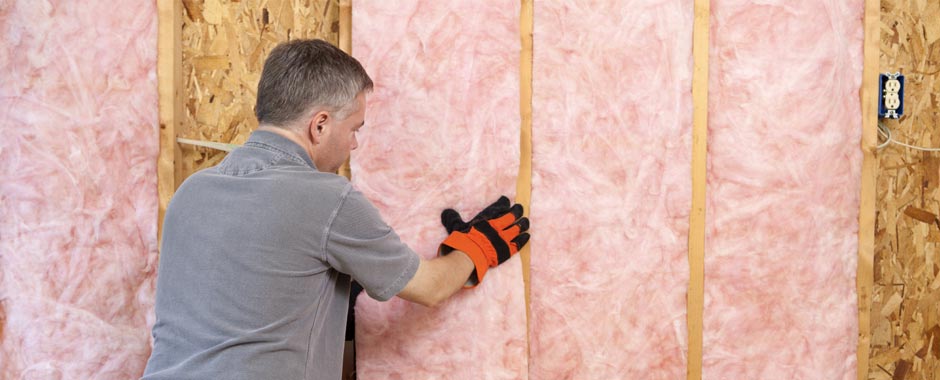
The first step is to define the decision's goals and objectives. In this situation the goal is to choose whether to use cotton or fiberglass insulation material. The stakeholders of this decision include: the Acme Construction Company, the field crews, the project manager, and their clients.
There are two alternatives for this decision: 1) Cotton or 2) Fiber Glass. Both materials are commonly used in the residential construction industry; however, the company has not done a thorough analysis on this problem before. They had traditionally gone with the cheapest material base on the price per square feet. Labor and environmental factors were not considered before. Since the company is known as an environmentally friendly developer, they need a way to show their customers that their homes were built using the most environmentally friendly materials and processes available.
For this decision, the company considered the following factors:
1) Recycled Content
2) Chemical Irritants
3) Density
4) Insulation Capabilities
5) Recyclablity
6) Fireproofing
7) Material Handling
8) Installation
The criteria of these factors are shown below.
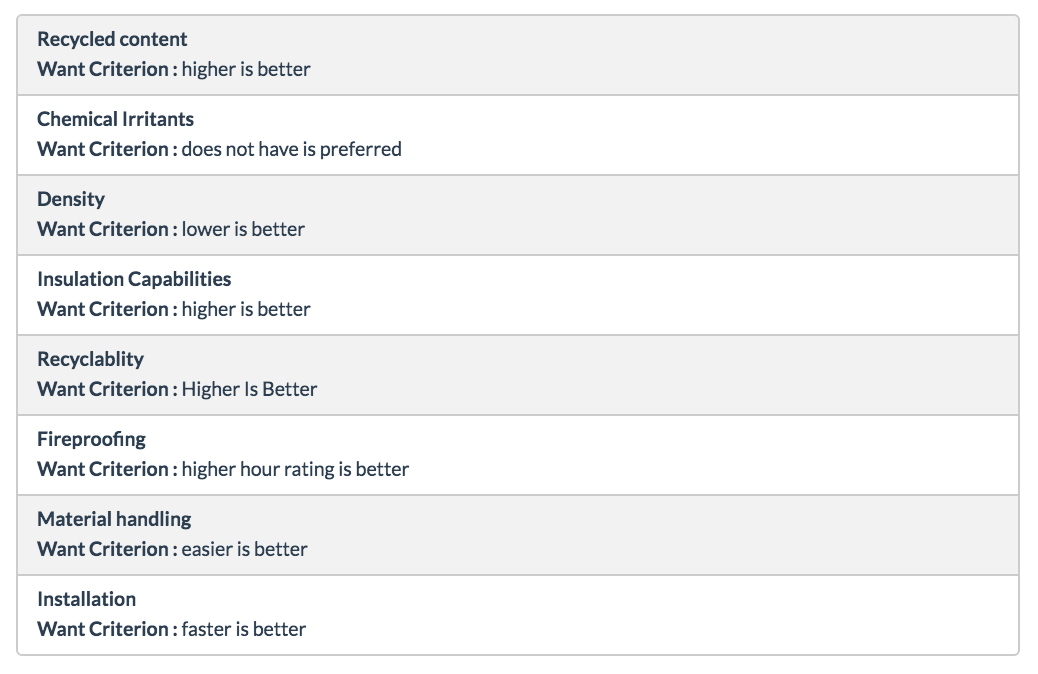
After the project manager has defined the alternatives and the factors for consideration, he starts gathering data on the attributes. An attribute is a characteristic, quality, or consequence of just one alternative. An attribute can either be qualitative or quantitative.
The attributes of this decision are shown below. For example, cotton contains 85% recylced materials while fiber glass contains 20%.

The key insight in making good decisions is to base them on the advantages of alternatives. To determine the advantages, the project manager first selects the least preferred attribute within each factor. Using the least preferred attribute as the basis for comparision, he then states the advantage of the other attributes relative to it. Finally, he selects the most important advantage within each factor.
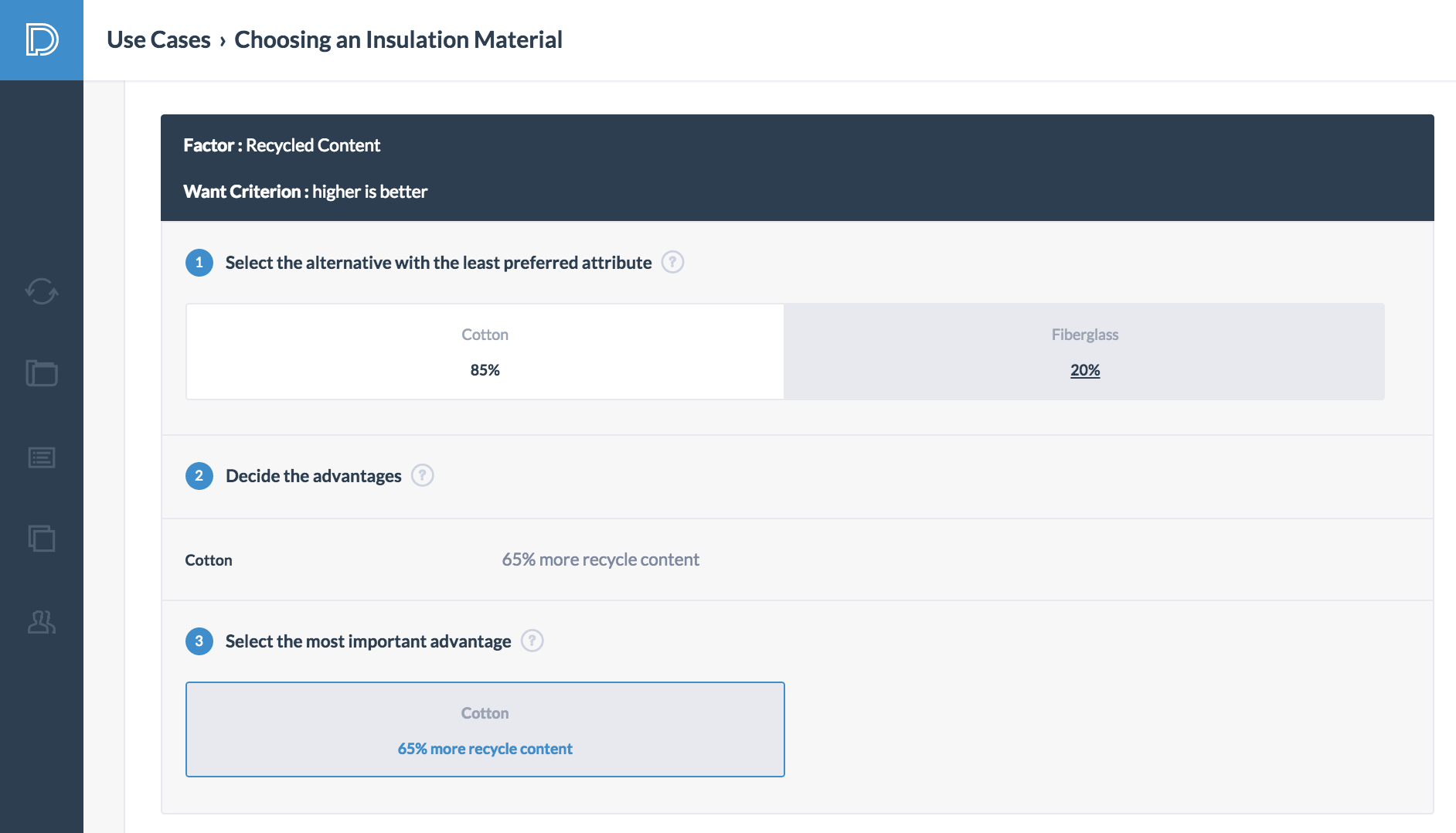
The sixth step in the decision-making process is the most subjective and requires an open dialogue between the stakeholders. After speaking with some the decision stakeholders, the project manager was better able to understand what they found valuable. He weighs the importance of advantages base on their feedback.

The seventh step in the decision-making process is to define the cost. The cost is the price that must be paid in order to obtain an alternative and can be broken into several categories. Notice that the cost is treated separately with a clear distinction from the previous steps.
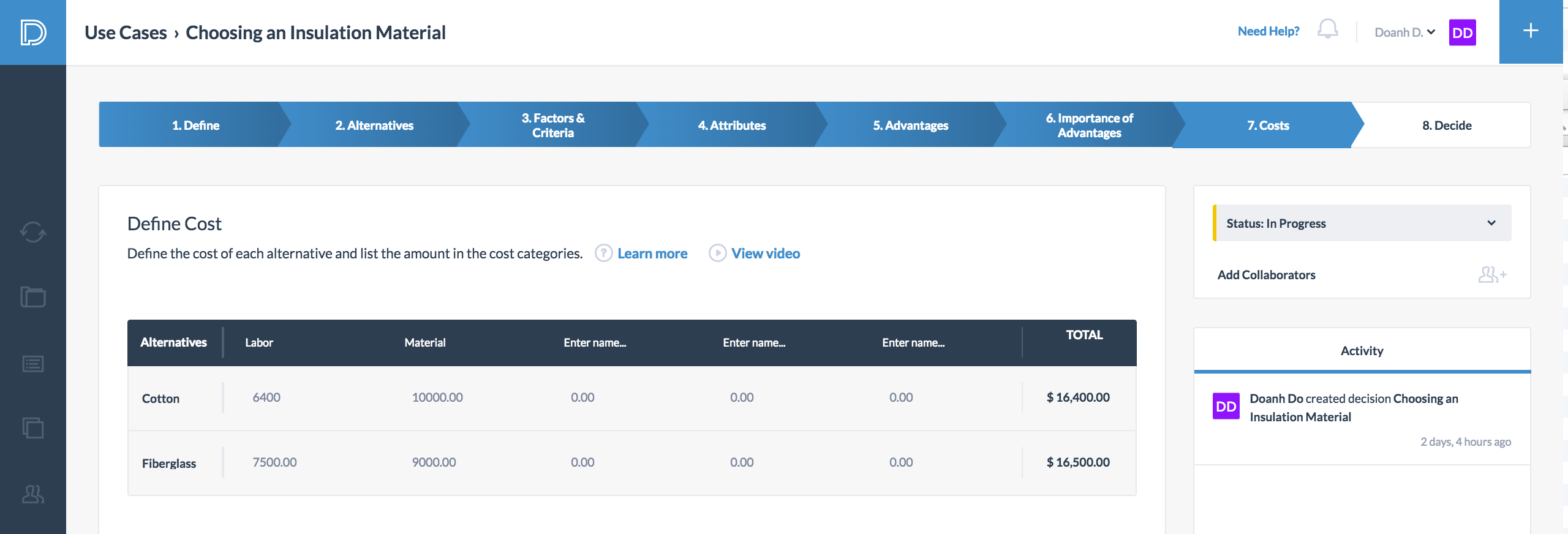
The project manager finally makes his decision base on the total importance of advantages vs cost. In this situation, the difference in cost is only $100 for each room while the difference in the total importance of advantages is 147. He ultimately decides to use fiberglass as the insulation material because it offers more advantages and only cost $100 more than cotton.
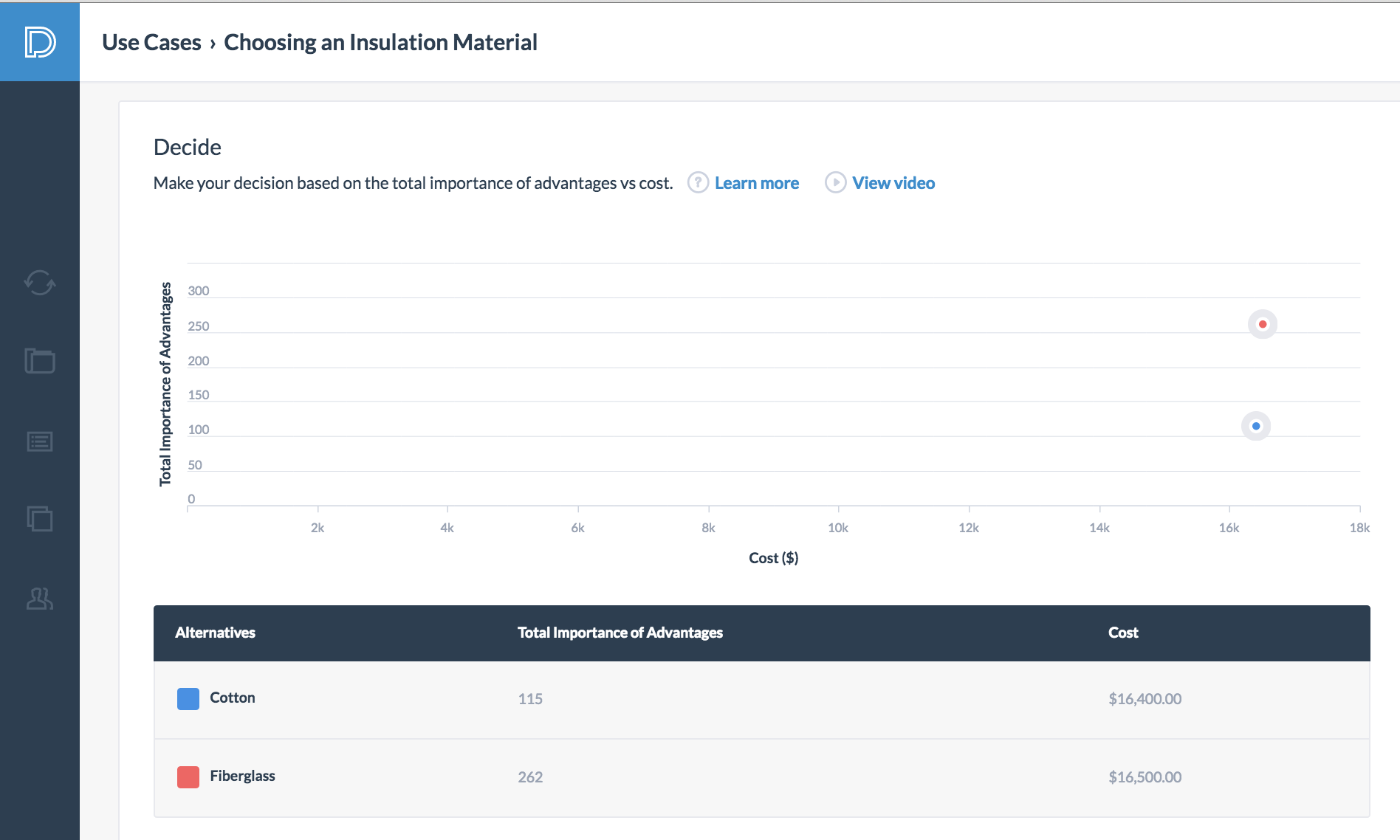
One of the benefits of using Paramount Decisions is the automatically generated reports. The software can create two types of reports base on the data inputted for the decision: 1) a full report and 2) a single page (A3 report). The project manager can easily send out the reports to different stakeholders to communicate the rationale of the decision. The analysis is clearly documented on the reports.
After finishing this analysis, he decides to conduct another analysis on the window and door materials. Paramount Decisions allows him to make informed material selection decisions that considers the stakeholder values. In some of his analysis, he found that he can save money and delivery a more advantageous home by using a particular product. As a practice, the company now conducts periodic analyses on all of their materials and vendors.
